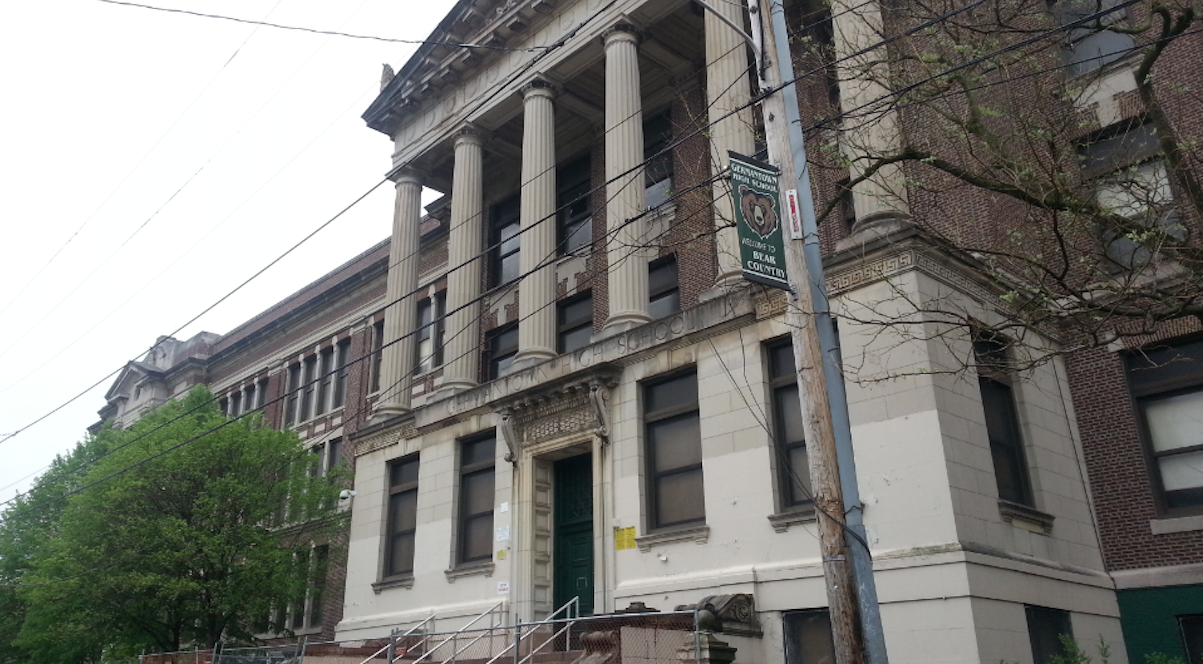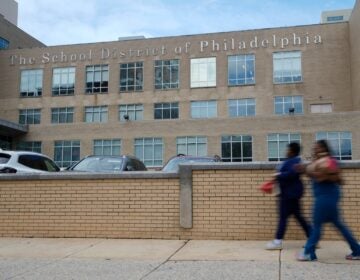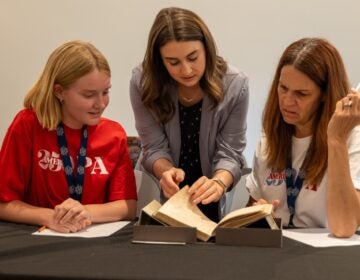Philly school closures found to make neighborhoods safer
Penn researchers found calls to police went down by “significant and substantive” margins after schools were shuttered.

Germantown High School (Aaron Moselle/WHYY)
When Philadelphia closed about 30 schools earlier this decade, many people feared the closures would harm surrounding communities as much as they would harm students, with abandoned school buildings becoming symbols of blight or magnets for crime.
But a new study from University of Pennsylvania challenges that assumption.
Researchers examined blocks surrounding those closed schools and measured how often people in those areas called police to report a crime.
Looking at data from 2006-2016, before and after the closures, they found the rates went down by “significant and substantive” margins.
Calls to police for violent crime fell especially sharply, according to the study, which will be published this summer in Regional Science and Urban Economics, an academic journal.
This drop happened during and around the school day, suggesting that it was the presence of students that had previously created more police calls. When the students left, crime seemed to slow.
But there was no corresponding increase during nights or weekends, suggesting that shuttered buildings did not become nerve centers of illegal activity. Co-author Matthew Steinberg believes that’s because many of the closures happened in struggling neighborhoods where there were already plenty of vacant properties.
“You’re talking about already-blighted communities where you’ve just effectively added another vacant building,” Steinberg said.
Neighborhoods that received displaced students from closed schools did see a bump in crime reports. That rise, however, was smaller than the drop experienced by neighborhoods with closed schools.
The “net effect,” researchers wrote, is “that crime drops when academically underperforming schools close.”
“These findings are in direct contrast to those concerned that closing schools would lead to increases in crime and are consistent with other research suggesting that policies that encourage the ‘interaction of high crime-risk students with low crime-risk peers’ may help reduce crime,” wrote the authors.
Philadelphia is a useful place to study this phenomenon because it closed so many schools in a relatively short period of time. The district said it had to close schools to cope with budget shortfalls and lagging enrollment — partly a by-product of the expansion of school choice. Some community activists fought the decisions, worried that mass school closures could hurt neighborhoods.
School district leaders tried to target schools with low enrollment, poor academics, and distressed facilities. Those schools tend to serve students who struggle academically and have more behavioral issues.
As a result, the district tended to close schools where lots of disadvantaged students gathered in the same physical space 180 times every year.
That dynamic, the researchers said, is not healthy — for students or neighborhoods.
“Our findings highlight the deleterious effect that concentrating economic and academic disadvantage into schools has on crime,” the authors wrote.
Overall, the authors said, reported crimes fell 15 percent in surrounding blocks when Philadelphia closed schools. For calls related to violent crime — mostly assault — the drop was 30 percent.
The study comes with a few caveats.
The declines do not necessarily mean neighborhoods didn’t suffer when schools closed. Germantown residents, for instance, say their still-vacant high school is an eyesore and a psychological wound. A recent PlanPhilly investigation found a similar case in Fairhill.
It’s also possible some of the problems associated with school closures emerged after 2016, beyond the scope of Penn’s study.
“When we’re thinking about abandonment and blight we have to think about a longer time scale,” said John MacDonald, one of the study’s co-authors.
Then there’s the academic side of this equation.
The authors of this study recently published a different paper that showed students displaced by school closures did not, overall, fare better on standardized tests after moving schools. It also indicated that students at “receiving schools” — schools that took in students displaced by the closures — fared worse academically after the upheaval.
There was some hope in the academic data. When students moved in small numbers to higher achieving schools, their test scores increased.
The authors believe their findings in both studies support one basic idea: that clustering disadvantaged students in a handful of schools is bad for students and bad for neighborhoods.
“By virtue of concentrating those students in the same schools you’re effectively concentrating disadvantage and likely exacerbating inequality,” said Steinberg. “We should be working to desegregate along the dimensions of both poverty and achievement.”
WHYY is your source for fact-based, in-depth journalism and information. As a nonprofit organization, we rely on financial support from readers like you. Please give today.





